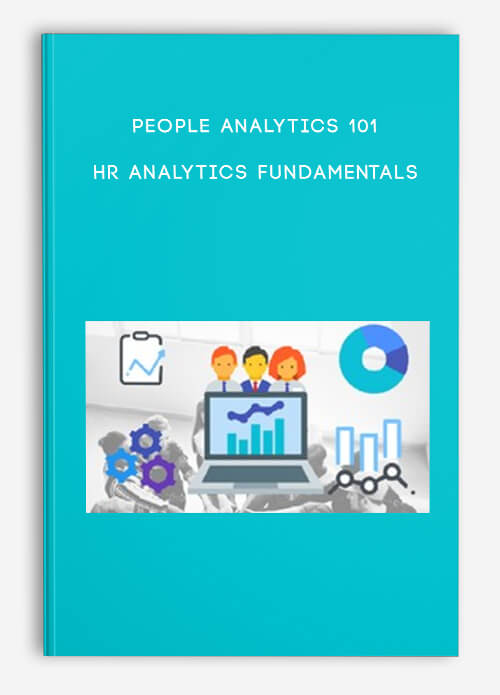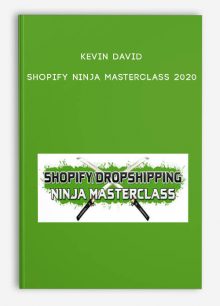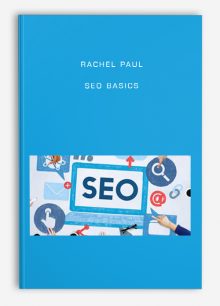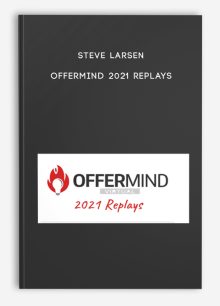People Analytics 101 : HR Analytics Fundamentals
$184.00 $19.00
Product Include:
File size:
People Analytics 101 : HR Analytics Fundamentals
**More information:
Get People Analytics 101 : HR Analytics Fundamentals at Salaedu.com
Description
- A Step by Step Approach to solve Business Problems in the area of People Analytics.
- Understand the concepts of Statistical model building.
- Journey of Analytics.
- HR analytics and its importance.
- Employee life cycle the areas where you can use analytics.
- Get an understanding of HR metrics and the Journey from Metrics to Analytics.
- Identify a business problem and its importance. You’ll also learn how to convert a business problem into statistical problem.
- Understand the science behind gathering the data from various sources and how to do it right.
- Understand how to create an efficient data dictionary for better understanding and future reference.
- Identify the dependent and independent variable in your dataset.
- Understand and learn about various file formats in which the data is stored Understand the steps involved in data preparation.
- Various methods to measure Central Tendency, Variability and Shape of data.
- Understand the steps involved in hypothesis testing, Univariate and Bi-variate Analysis.
- Learn the concepts of Feature Engineering.
- R and Rstudio: Installation, importing files and installation of packages.
- Understand the concept of Machine Learning – Supervised and Unsupervised Learning Techniques.
- Anyone can take this course. You do not need any prior knowledge or additional equipment.
People analytics is also known as HR analytics or you can say talent analytics. It is kind of analytics which helps HR managers, executives to make data-driven decisions about their employee or the workforce. It gives you expertise in using statistics, technology on unused but very important people’s data which can help you in making better business decision and management for your company. If we talk about numbers, research by McKinsey shows the people analytics can help in an 80% increase in recruiting efficiency, 25% rise in business productivity and 50% decreases in attrition rate.
Once you have completed the course, you can help your company to better drive the return on their investment on their employee. Classic approaches are not sufficient in getting the required result in the long run.
To overcome this gap we came up with a solution where you can learn the techniques of solving these problems on your own in a very simple and intuitive self-paced learning method.
You will understand how and when to use the people’s data to make decisions on
- Hiring,
- Recruitment,
- Talent Development,
- Employee Retention,
- Employee Satisfaction,
- Employee Engagement, etc.
Don’t worry we will not going to perform complex talent management data analysis, but guide you to reach that step.
We have tried to create a very simple structure for this course so even if you have no knowledge or very basic knowledge of analytics then even you won’t face any problem throughout the course. Let’s take a look at the structure. We will start with the
- Understanding of what is analytics and why it is required.
- Areas where you need to apply your business analytics understanding.
- Understanding and acting on talent data across the entire employee life cycle.
- Understanding a business problem
- Finding a better analytical solution to that business problem
- How to collect data to solve that problem
- How to Find solutions using basic analytics technique or you can say Exploratory Data analytics.
- Applying feature engineering techniques to get the most out of data.
- You will also learn, how to do hypothesis testing and what are various techniques.
- And the most important is applying machine learning on HR Data and predicting futuristic insights.
- Oh, and wait, you are also learning data analysis techniques, which you can apply anywhere.
We intend to introduce you to “Businesses prosper when the people who work in them prosper”. People analytics 101 is curated to help make both happen and at the same time, you flourish in your career growth, too.
- HR Professionals who want to incorporate data analysis into their practice.
- Managers who want to make data-driven decisions about employee, teams and their management practices.
- Data Analysis professionals looking to apply their skills to people management decisions.
- Students learning HR.
- Students or any individual who want to advance into HR.
- Business owners and Entrepreneurs.
Business online course
Information about business:
Business is the activity of making one’s living or making money by producing or buying and selling products (such as goods and services).
[need quotation to verify] Simply put, it is “any activity or enterprise entered into for profit.
It does not mean it is a company, a corporation, partnership, or have any such formal organization, but it can range from a street peddler to General Motors.”
Having a business name does not separate the business entity from the owner, which means that the owner of the business is responsible and liable for debts incurred by the business.
If the business acquires debts, the creditors can go after the owner’s personal possessions.
A business structure does not allow for corporate tax rates. The proprietor is personally taxed on all income from the business.
1 review for People Analytics 101 : HR Analytics Fundamentals
Add a review Cancel reply
Related products
Business & Marketing











king –
We encourage you to check Content Proof carefully before paying.“Excepted” these contents: “Online coaching, Software, Facebook group, Skype and Email support from Author.”If you have enough money and feel good. We encourage you to buy this product from the original Author to get full other “Excepted” contents from them.Thank you!